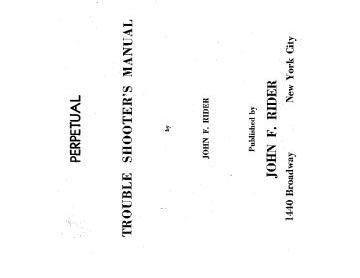Climax 90 Schematic purchase
Schematics
Search
Search
Valve
Data
Data
Transistor
Data
Data
Contact
Information
Information
Free
Radio Books
Radio Books
Privacy
Policy
Policy
| Climax 90 (Rider : Climax 7 P: 14) |
| £1.80 (~ $2.20 or €2.10) |
| Not the correct model? go back to the search page to change |
|
Check your Email address is correct...
Check Spam folder if nothing received! Email me to advise of alternative address. |

| Country | USA |
|---|---|
| Manufacturer | Climax Radio & Television Co, Inc.; Chicago (IL) |
| Alternative Name | Amplitron |
| Model | 90 "The angry face" - Climax Radio & Television Co, |
| Year: 1936 | Broadcast Receiver |
| Valves | 7: 6A7 6D6 76 75 6E5 42 80 |
| Technology | Superhet IF 456 kHz |
| Tuned Circuits | 7 AM circuits |
| Wave Bands | Broadcast plus 2 Short Wave bands |
| Power Type | 106-120 Volts AC |
| Notes | The Climax model 90 can be called "The angry face" because of its scale (escutcheon), which mostly was round, not oval. Here it is oval and used also the 6G5 or 6E5 as Tuning eye, also called Magic Eye. From sfHobbies.com: "It is built in five layers. The first layer is the outer dial glass, the second layer’s glass with printed band scales and the oval labels “TONE”, VOLUME”, and ”BAND SELECTION”, the third layer is a thick black cardboard (usually faded color), the fourth layer is a blue plastic ring 3/8 inches high (almost invisible from outside; it designed to separate the 3rd and 4th layers and give a blue tint unto the background), and finally the fifth layer is a dial background image printed on a thick paper. Controls are integrated within the dial, which is not a common feature during that period of time." This model receives most probably broadcast 550 to 1700 kHz (blue), 1.8 to 6 MHz (red) and 6 to 18 MHz (yellow). |
| Source | Book: Gernsback Vol: 7 Page: 338 |
| Source | Book: Rider Vol: 7 Page: 14 |